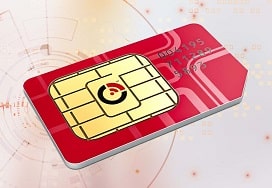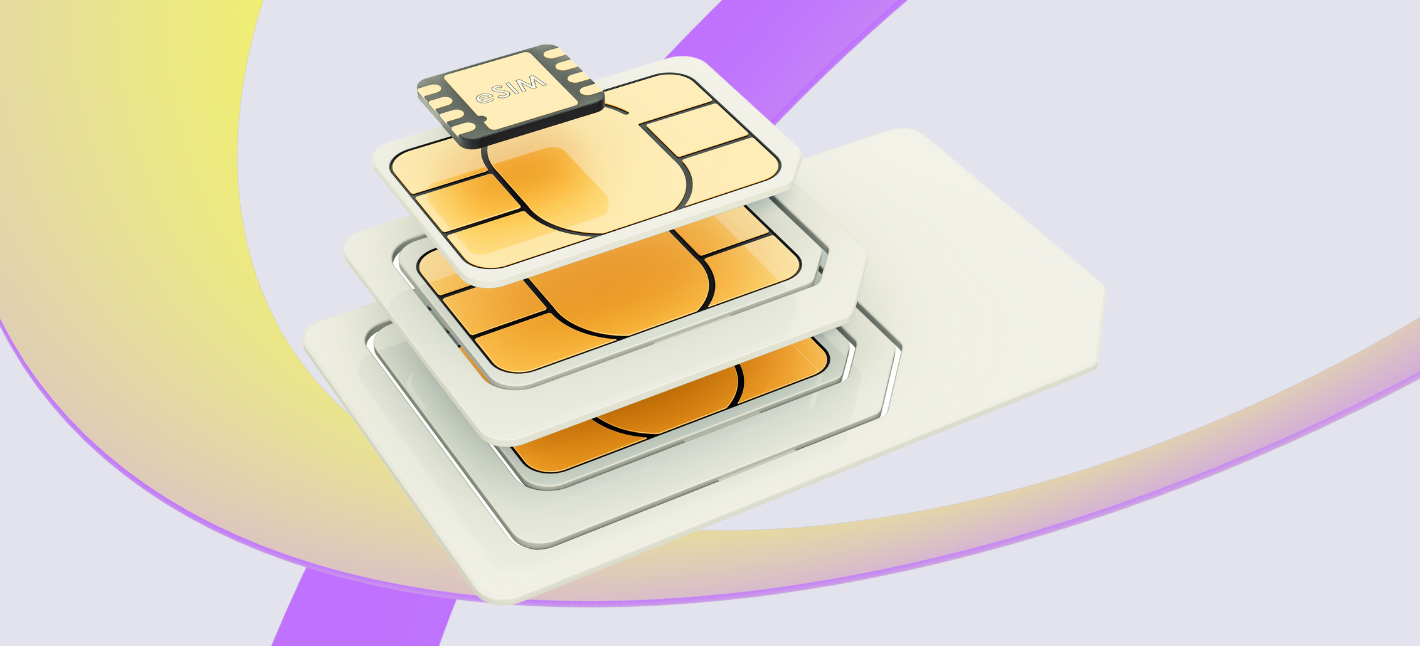Esim With Vodacom eSIM, eUICC, Global SIM Comparison
Is Esim Available In South Africa eUICC: Change M2M SIM Remotely
The rising demand for food throughout the globe poses vital challenges for farmers and agricultural stakeholders. Traditional farming practices may not meet the evolving needs of a growing inhabitants, creating an urgent want for innovation. Internet of Things (IoT) know-how emerges as a transformative solution, offering enhanced connectivity for smart agriculture systems, which might revolutionize agricultural practices.
IoT connectivity permits for varied gadgets to speak with one another, offering real-time information that can drive informed decisions. By using sensors, drones, and knowledge analytics, farmers can achieve entry to useful insights into soil moisture, crop health, and climate conditions. This stage of connectivity not only enhances productivity but in addition facilitates precision agriculture, minimizing useful resource waste and maximizing yield.
Is Esim Available In South Africa Embedded SIM (eSIM) vs Integrated SIM
Integration of IoT in agriculture facilitates the automation of various processes. Automated irrigation methods can adjust water flow primarily based on real-time soil moisture readings, conserving water and ensuring that crops obtain optimal irrigation. Physical Sim Vs Esim Which Is Better. Additionally, pest management methods geared up with IoT sensors can detect pest exercise early, permitting for targeted actions that minimize pesticide use and cut back environmental impact.
The deployment of IoT connectivity can significantly enhance supply chain administration in agriculture. With sensors monitoring produce from the farm to the consumer, stakeholders can ensure that food high quality is maintained throughout the distribution process. This not solely reduces spoilage but additionally assists in compliance with meals security rules.
Farmers can leverage IoT-enabled gadgets to monitor weather patterns, soil situations, and crop performance in real-time. Using this knowledge, they'll make predictive analyses and plan their activities accordingly. For occasion, understanding rainfall patterns can inform choices related to planting and harvesting, ultimately leading to elevated productiveness.
Euicc And Esim FAQs About eSIM and RSP
Further, IoT connectivity promotes sustainable farming practices. By optimizing using assets similar to water, fertilizers, and pesticides, farmers can effectively scale back their carbon footprint. This is important in addressing environmental challenges and promoting long-term agricultural sustainability.
The financial impact of implementing IoT in smart agriculture systems should not be underestimated. Increased yield and lowered useful resource wastage lead to improved profitability for farmers. Moreover, better crop administration can lead to the manufacturing of higher-quality items, doubtlessly opening up new market opportunities.
Use Esim Or Physical Sim Understanding eUICC and Its Uses

Farmers can also make use of cell applications that mixture information collected via IoT units. These applications present easy-to-understand visual reviews, permitting farmers to make fast and knowledgeable choices. Such accessibility to real-time information democratizes farming data, empowering smallholders and large-scale operations alike.
Collaborative platforms utilizing IoT expertise can encourage information sharing amongst farmers. By contributing their own data on crop yields and soil health, farmers can collectively benefit from shared data, driving innovation and adaptation of best practices in their community.

Educational initiatives surrounding IoT connectivity play a crucial position in its adoption in agriculture. Training applications can help farmers perceive the operational benefits of those technologies, making them extra prone to embrace change. Accessibility to information will empower farmers to harness IoT for effective decision-making.
Esim Vs Normal Sim eUICC eSIMs: Perception vs Reality
Despite the quite a few advantages, challenges remain in implementing IoT connectivity for smart agriculture techniques. Infrastructure limitations, significantly in rural areas, must be addressed to make sure that farmers can utilize superior technologies. Additionally, making certain knowledge security and privateness is critical, because the elevated interconnectivity opens avenues for potential cyber threats.
Investment in IoT know-how in agriculture can draw companion organizations, including governments and academic establishments. By collaborating, numerous entities can foster an environment conducive to analysis and growth, making certain that improvements benefit the broader agricultural group. This could lead to enhanced agricultural practices which might be economically viable and environmentally sustainable.
The way forward for IoT connectivity for smart agriculture techniques seems promising. As technology continues to evolve, so too will the probabilities for enhancing agricultural productivity and sustainability. With continuous innovation, the hole between conventional farming methods and fashionable know-how will slender. This evolution is important for tackling the urgent challenges faced by the agricultural sector at present.
Dual Sim Vs Esim Multi-IMSI vs eUICC Comparison
Farmers who undertake smart agriculture systems powered by IoT connectivity could discover themselves better positioned in a rapidly changing market landscape. As shopper preferences shift in the direction of traceability and sustainability in meals sourcing, these geared up with IoT technologies may have a definite advantage. This adaptability will empower farmers to not solely meet market calls for but exceed them.
Emerging technologies such as artificial intelligence and machine learning will only improve the capabilities of IoT in smart agriculture. These technologies can process huge quantities of knowledge, identifying patterns and optimizing resource management autonomously. As such developments happen, agriculture will shift towards a more data-driven future.
Esim Vodacom Iphone Overview of eSIM and SIM
It is essential for stakeholders to acknowledge the potential of IoT connectivity for smart agriculture systems. The convergence of agriculture and expertise can lead to transformative changes, bettering farmers' livelihoods and guaranteeing meals security for generations to return. Adopting this revolutionary method could pave the greatest way for a extra resilient and sustainable agricultural landscape.

To summarize, the mixing of IoT connectivity into smart agriculture systems has the potential to revolutionize farming practices. With improved knowledge entry and decision-making skills, farmers can optimize their processes, reduce waste, and enhance productiveness whereas selling sustainability. The journey forward shall be full of challenges, but the potential advantages are substantial, paving the best way for a brighter future in agriculture.
- Enables real-time monitoring of soil moisture, temperature, and nutrient levels, optimizing irrigation processes for better crop yields.
- Facilitates automated pest and disease detection via interconnected sensors, resulting in timely interventions and reduced chemical usage.
- Supports livestock tracking with GPS-enabled collars, allowing farmers to observe animal health and location for higher management.
- Integrates climate forecasting knowledge with subject sensors to adjust farming practices primarily based on predicted circumstances, bettering resilience against local weather variability.
- Enhances resource administration by connecting gear like tractors and drones for precision farming, minimizing waste and maximizing efficiency.
- Promotes data-driven decision making by aggregating information from various units, offering insights into crop efficiency and operational efficiencies.
- Encourages sustainable practices by optimizing fertilizer utility by way of sensor suggestions, lowering runoff and environmental influence.
- Empowers farmers with cellular purposes to remotely control and monitor systems, enabling efficient crisis management from any location.
- Enables block chain technology integration for transparent supply chain monitoring, ensuring higher traceability from farm to table.
- Fosters collaboration between farmers and agri-tech startups via shared data platforms, driving innovation and advancements in agricultural practices.
What is IoT connectivity in smart agriculture systems?
IoT connectivity refers to the click here to find out more integration of Internet of Things (IoT) units in agriculture, allowing for real-time information collection and analysis from various sensors, machinery, and drones. This connectivity allows farmers to observe crops, soil moisture, and weather circumstances remotely, improving decision-making and enhancing productiveness.
Esim Vodacom Iphone Best eSIM and eUICC Options
How does IoT improve crop management?

IoT devices present useful insights into crop health by accumulating information on soil moisture, temperature, and nutrient levels. This information permits farmers to optimize irrigation, fertilization, and pest management, resulting in more healthy crops and elevated yields.
What sensors are commonly utilized in smart agriculture?
Common sensors used in smart agriculture embrace soil moisture sensors, weather stations, temperature sensors, and pH sensors. These gadgets collect important data that can be analyzed to improve farming practices and optimize resource utilization.
Physical Sim Vs Esim Which Is Better What is eUICC Explained?
Is IoT connectivity cost-effective for small farms?
While the initial funding in IoT methods could be important, the long-term advantages typically outweigh the prices. Enhanced knowledge assortment leads to elevated efficiency, decreased waste, and better yields, making IoT a cheap resolution for small farms over time.
How does information safety work in IoT agriculture systems?
Data security in IoT agriculture techniques involves numerous measures, similar to knowledge encryption, secure communication protocols, and regular software updates. These practices help defend sensitive info and make positive that systems remain resilient against cyber threats.
Esim Vodacom Sa eUICC, Embedded SIMs, eSIM Discussions
Can IoT solutions assist with pest management?
Yes, IoT solutions can considerably enhance pest administration through the use of sensors to monitor pest populations and environmental situations. This data allows targeted pesticide application, lowering chemical usage and environmental influence whereas enhancing crop protection.
What function does analytics play in IoT for agriculture?
Which Networks Support Esim South Africa What is eUICC?
Analytics transforms raw data collected by IoT units into actionable insights. By analyzing developments and patterns, farmers can make knowledgeable selections about crop administration, useful resource allocation, and danger mitigation, main to raised overall farm performance.
How can I combine IoT into my present farming practices?
(Use Esim Or Physical Sim)
Physical Sim Vs Esim Which Is Better eUICC: Change M2M SIM Remotely
Integrating IoT into current farming practices includes assessing current operations, deciding on appropriate IoT units and platforms, and implementing a phased approach. Starting with a few sensors to assemble essential information might i was reading this help farmers steadily incorporate IoT options while minimizing disruption.
Is coaching necessary for utilizing IoT agricultural systems?
Euicc Vs Esim Activating eSIM-Capable Devices Guide
Yes, training is crucial for maximizing the advantages of IoT agricultural methods. Farmers and workers should understand the way to function IoT devices, interpret information, and apply insights successfully. Manufacturers and service providers often provide training and assist to ease this transition.